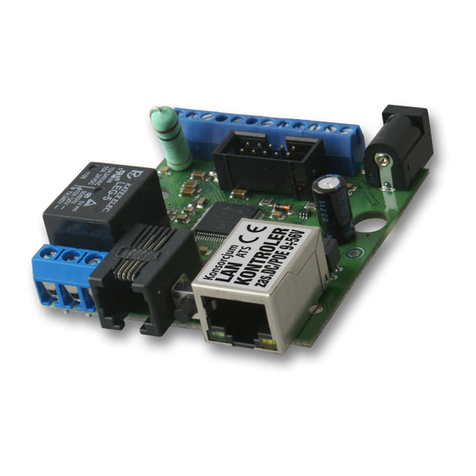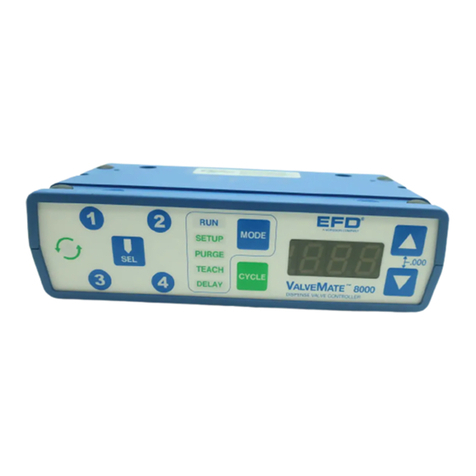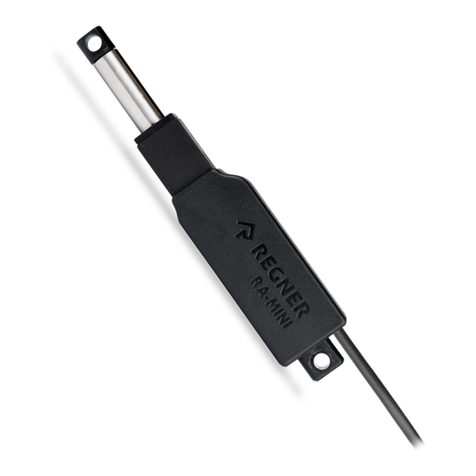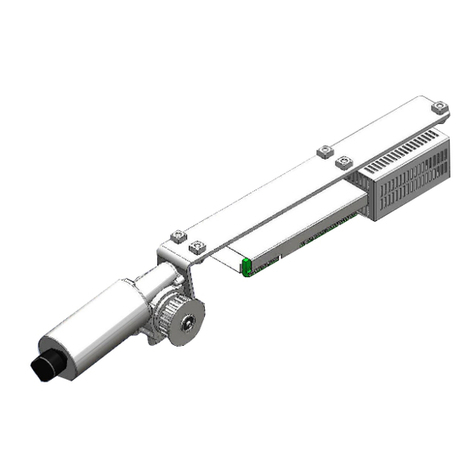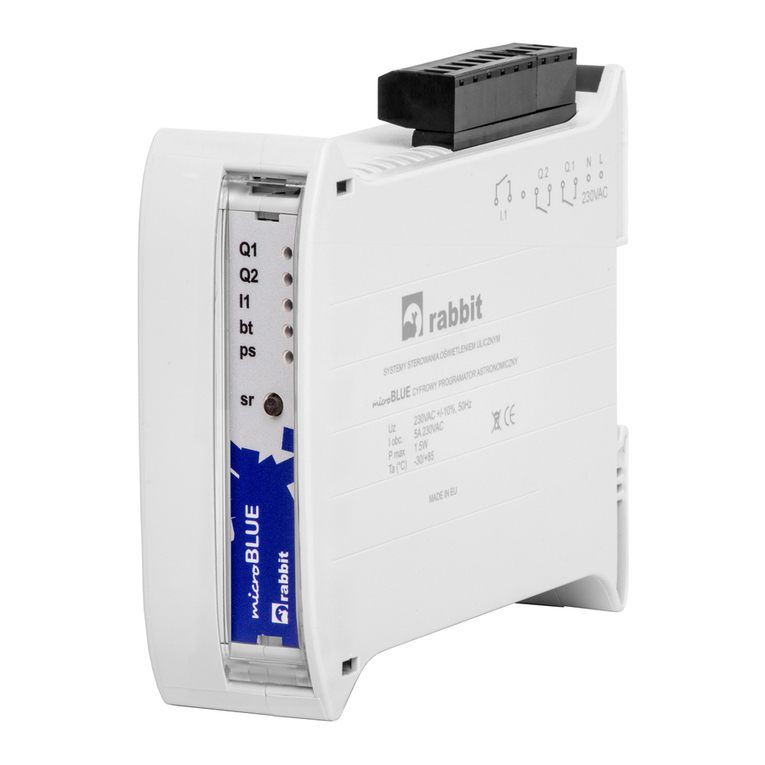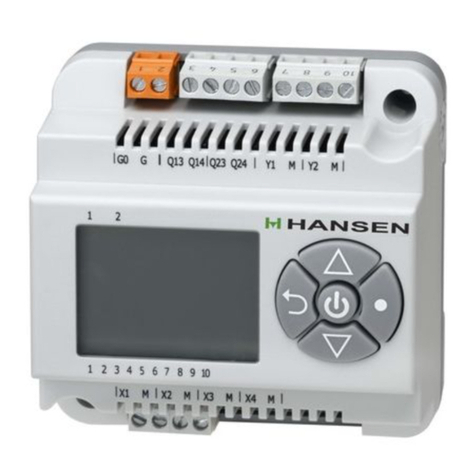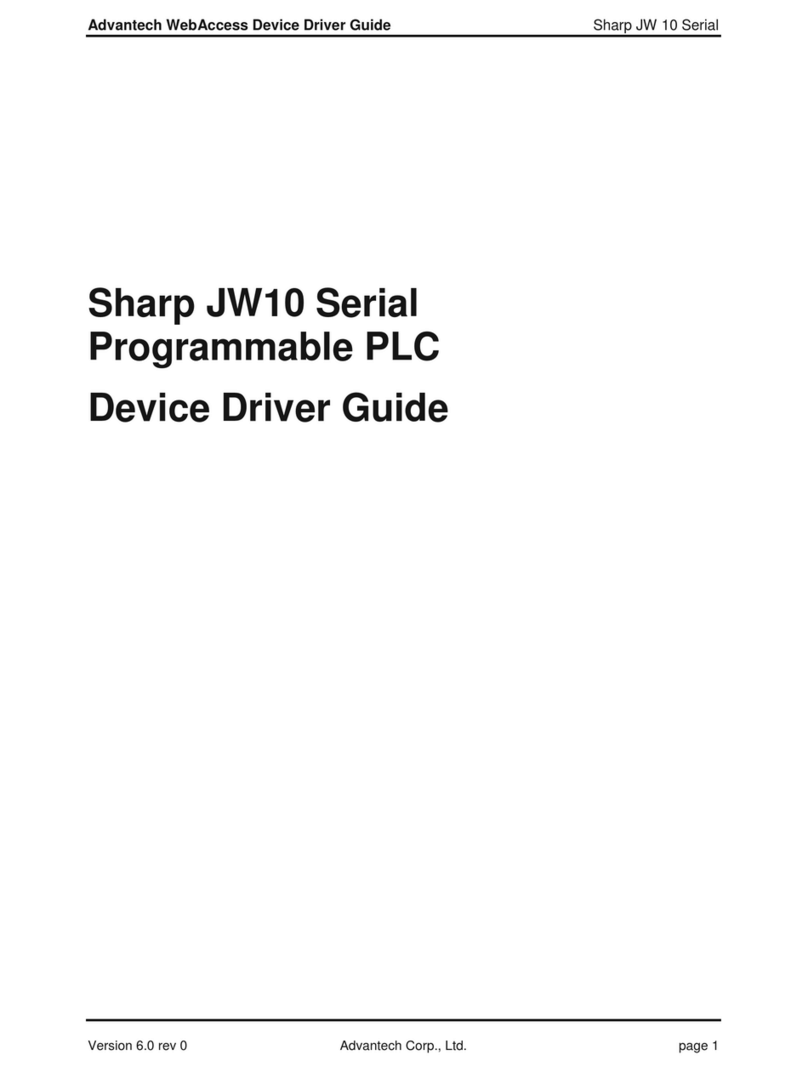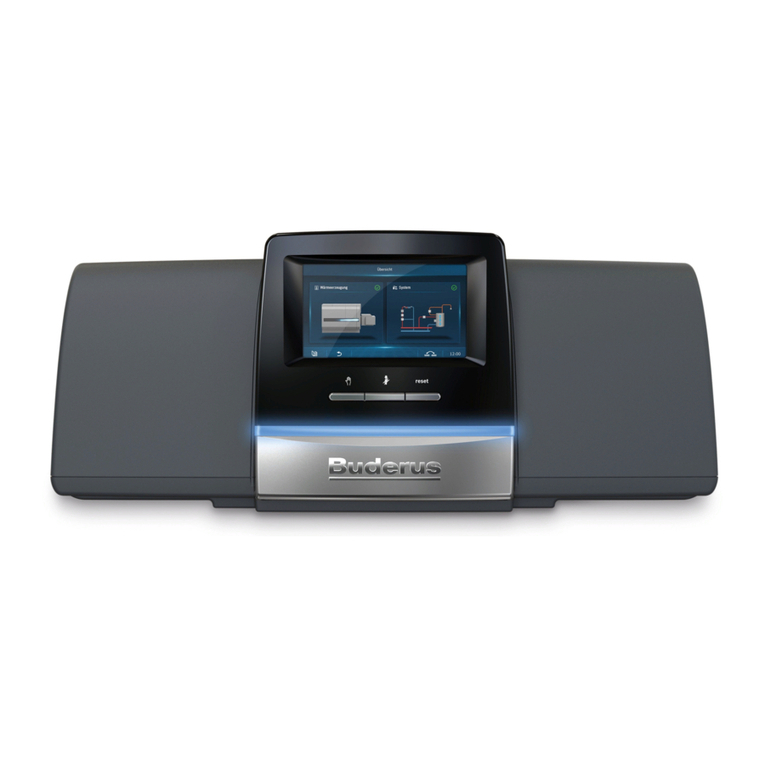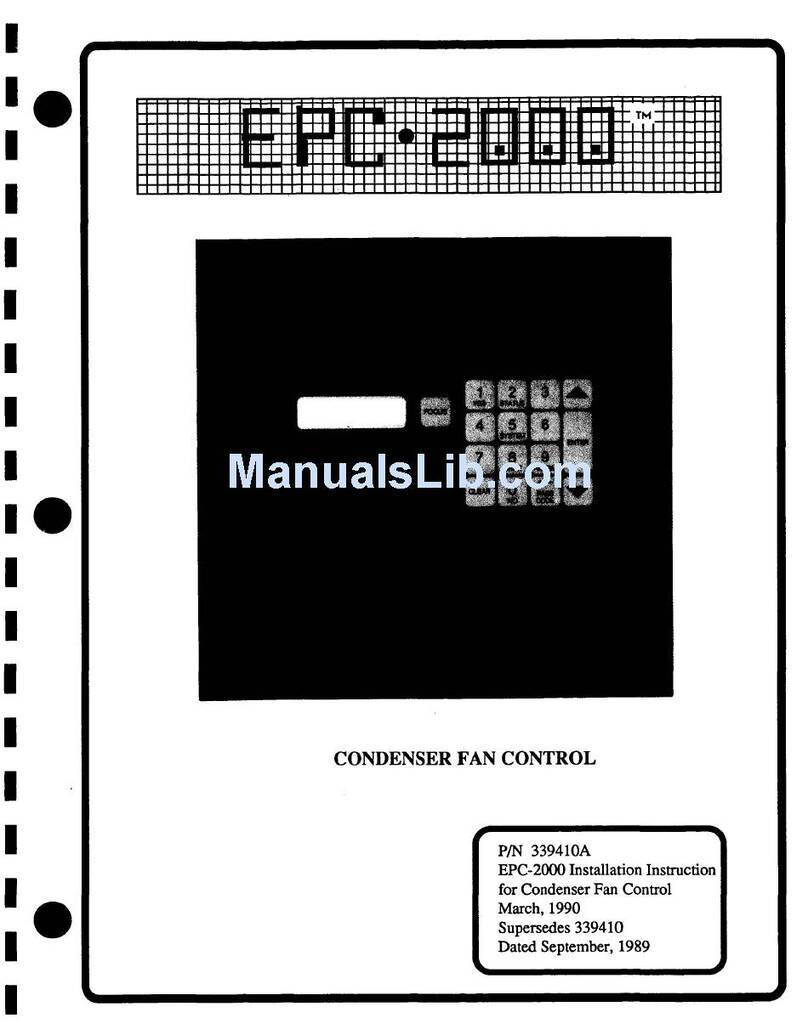Delco Remy 37MT Reference guide

Diagnostic
Procedures
Manual
new diagnostic manual 4/5/05 9:47 AM Page u
This document, and more, is available for download from Martin's Marine Engineering Page - www.dieselduck.net

Section Page
I INTRODUCTION AND DESCRIPTION
1–1. Introduction 1-1
1–7. Description 1-1
1–12. Electrical Fundamentals 1-2
II DIAGNOSIS CHARTS
2–1. Overcharge Symptoms 2-1
2–2. Undercharge Symptoms 2-2
2–3. Milled Pinion Symptoms 2-3
III TESTING
3–1. Testing Freedom Batteries 3-1
3–4. Testing Conventional Batteries 3-1
3–5. Test Procedure 3-2
3–7. Battery Cable Test with Single Battery Location 3-2
3–10. Battery Cable Test with Dual-Battery Locations 3-3
3–13. Starter Solenoid Circuit Test 3-4
3–18. Magnetic Switch Circuit Test 3-6
3–21. Starter Replacement Determination 3-6
3–26. Alternator Wiring Test 3-7
3–29. Alternator Replacement Determination 3-8
3–33. Completion of All Tests 3-9
IV SUMMARY 4-1
V APPENDIX
5–1. Overcrank Protection (OCP) Circuit Check 5-1
5–2. Multi-Battery Charging with Series Parallel Chargers 5-1
5–3. Group Charging on Current-Limiting or Series Chargers 5-2
5–4. Group Charging on Voltage-Limited or Parallel Chargers 5-2
5–5. Heavy Duty Diagnostics Procedures Data 5-3
CONTENTS
new diagnostic manual 4/5/05 9:47 AM Page v
This document, and more, is available for download from Martin's Marine Engineering Page - www.dieselduck.net

1-1. INTRODUCTION
1-2. PURPOSE. The purpose of this manual is to
provide diagnostic procedures that can be used for
troubleshooting a heavy-duty electrical system,
consisting of the starting system and the charging
system. Some of the procedures described in this
manual may also be used for preventative maintenance
checks. These procedures are applicable to systems
using Heavy Duty Starters such as: Delco Remy 37 MT,
41 MT, 42 MT, 50 MT or similar with adequate battery
power for the engine/starter application used.
1-3. DEFINITION OF “DIAGNOSIS.” Diagnosis is
the three part process that begins when a problem is
perceived and ends when the equipment is confirmed
as serviceable. The process can be described by using
three questions that must be answered to assure
completion:
1. What are the symptoms? This is what has been
observed (seen, heard, felt or smelled) that indicates a
problem.
2. What caused the symptoms? This involves
using diagnostic procedures to identify the root cause
of the problem.
3. How do we fix it? Usually this involves the
adjustment, repair or replacement of some part or parts.
1-4. The primary emphasis of this manual is to define
the procedures to determine “what caused the
symptoms.” Actual adjustment, repair or replacement
procedures are provided in unit specific service bulletins
and manuals.
1-5. For educational purposes, study of this entire
manual is recommended. For diagnostic purposes, the
flow charts in Section II will reference appropriate
procedures for specific symptoms.
1-6. EQUIPMENT REQUIRED. To perform the
tests specified in this manual, the following equipment
is required:
1. A variable carbon pile load tester, more than
500 amps capacity with ammeter (and voltmeter).
2. A separate DC voltmeter, digital preferred,
capable of reading 0.01 volt increments.
3. An inductive (clamp-on) ammeter for safe and
accurate current measurements.
1-7. DESCRIPTION
1-8. SYSTEM. The heavy-duty electrical system is
made up of the starting system and the charging
system. These systems are, in turn, comprised of
batteries, the starter, the alternator, the
interconnecting wiring and electrical and mechanical
switches. For maximum operating efficiency, all parts
of the system must be functioning properly.
Section I
INTRODUCTION AND DESCRIPTION
1-1
1. BATTERY
2. STARTER
3. ALTERNATOR
4. MAGNETIC SWITCH
5. PUSH BUTTON SWITCH
6. KEY SWITCH
1
2
3
4
5
6
Figure 1-1. Heavy Duty Electrical System
DP-1001
new diagnostic manual 4/5/05 9:47 AM Page 1-1
This document, and more, is available for download from Martin's Marine Engineering Page - www.dieselduck.net

1-9. BATTERIES. Batteries are perishable devices
that wear out at some point in time. With use they
deteriorate and eventually become incapable of
performing their important job. In addition, new, good
batteries may become discharged for various reasons.
Neither worn out nor discharged batteries can supply
the power necessary for cranking. Thus the battery
check becomes the starting point for diagnosing
electrical system problems.
1-10. SUB-CIRCUITS. (See Figure 1-1) Because
of vibration, corrosion, temperature changes or damage,
the performance of wiring, connections, and secondary
components as well as the function of the starter and
alternator can deteriorate. This in turn can cause
malfunctions within the starting and charging systems.
For the purpose of testing, wiring and components are
broken down into four circuits that must be tested.
These are:
1. Cranking Circuit. This consists of the large
cables that carry the high starter current. Excessive
loss here causes slow cranking speeds, especially in cold
weather. Inability to start from slow cranking can lead
to starter burn-up if the starter is cranked over 30
seconds. Deeply discharged or worn-out batteries can
also cause the same problem.
2. Solenoid Circuit. This consists of the wiring
from the battery, through a push button or magnetic
switch, to the “S” terminal of the starter solenoid, and
back to the battery. Excessive loss here can cause the
solenoid to shift in and out (chatter) resulting in a no-
start condition. This can cause a burned contact disc
and terminals of the starter solenoid. Deeply discharged
batteries can also cause this problem.
3. Magnetic Switch Circuit (When Magnetic
Switch Used). This is made up of the wiring from the
battery through a key switch and/or start button to
the coil of the magnetic switch and back to the battery.
Excessive loss here can cause a “no start” complaint.
4. Charging Circuit. This consists of the wiring
between the alternator and the battery and back to
the alternator. Excessive loss here can cause the
batteries to not charge properly. As noted above,
discharged batteries will cause other problems.
1-11. SEQUENCE OF PROCEDURES. It is important
that the procedures in the manual be followed in the
exact sequence specified. Batteries, wiring and connec-
tions should be checked and corrected to the specifica-
tions given. If cranking problems still occur, then connect-
ing cables should be checked before replacing the starter
with a known good unit. Similarly, in the charging circuit,
batteries wiring and connections should be thoroughly
checked and corrected to the specifications given. Only
then should the alternator be checked and replaced if
necessary.
1-12. ELECTRICAL FUNDAMENTALS
1-13. TERMS AND DEFINITIONS. Following are
some electrical terms that we will be dealing with in
this manual and their definitions:
1. Voltage (See Figure 1-2). Voltage is the electrical
pressure or force that causes current or electrons to flow
through a conductor. The voltage can also be described as
the difference in electrical pressure between two points
in a circuit. This electrical force or pressure is measured
in volts.
2. Current (See Figure 1-3). Electrical current is the
flow or movement of electrons in a conductor. This move-
ment can be compared to the flow of water through a
pipe. Without pressure (voltage) the current will not flow.
Electrical flow is measured in amperes, most often abbre-
viated as amps.
1-2
VOLTAGE = ELECTRICAL PRESSURE
Figure 1-2. Voltage
DP-1002
Figure 1-4. Resistance
RESISTANCE
(OHMS)
CURRENT
DP-1004
Figure 1-3. Current
FLOW - ELECTRON CURRENT
DP-1003
new diagnostic manual 4/5/05 9:47 AM Page 1-2
This document, and more, is available for download from Martin's Marine Engineering Page - www.dieselduck.net

3. Resistance (See Figure 1-4). Resistance is
the opposition to current flow. For a given electrical
pressure (voltage), resistance decreases current flow.
This can be detected by voltage loss or drops in the
electrical circuit. Electrical resistance is measured in
ohms.
4. Magnetic Field (See Figure 1-5). When electrical
current flows through a conductor, a magnetic field is
produced around the conductor. By measuring the
strength of this magnetic field it is possible to determine
the amount of the current flow or amperage. This
principal is the basis for the function of the clamp-on
or induction type ammeter.
1-14. MEASURING VOLTAGE WITH THE VOLT-
METER. The voltmeter is used to measure electrical
pressure or voltage. The unit of measure is the volt.
Voltmeters are always connected across (in parallel
with) a part of the electrical circuit (See Figures 1-6
and 1-7). The voltmeter measures the difference in
electrical potential or pressure between the points
where the voltmeter is attached.
1-15. VOLTMETER SELECTION. Voltmeters for the
purposes described in this manual are DC instruments
with a range as follows:
1. Low scale: 0-3 volts
2. 12 volt vehicles: 0-16 volts
3. 24 volt vehicles: 0-32 volts
NOTE
The use of digital voltmeters is highly
recommended for the following reasons:
• Digital voltmeters are generally more
accurate than analog (needle movement)
instruments.
• Digital readings need no interpretation;
everyone sees the same number.
• Digital instruments are generally
autoranging; they automatically select the
proper range for the value of the reading.
• Reversing polarity with a digital
instrument will simply result in a negative
reading (minus sign) whereas with an
analog voltmeter, reversing polarity could
damage the meter.
• If analog meters are not read directly facing
the meter, inaccuracies may result.
1-16. VOLTMETER USE. Figures 1-6 through 1-8
illustrate the proper use of the voltmeter and the types
of readings that can be expected.
1. Figure 1-6 shows the voltmeter being used with
no current flow, that is with the starter not operating.
1-3
CURRENT
MAGNETIC FIELD
DP-1005
V1
V2
12.5 V
12.5 V
12.5 V
12.5V
12.5V
0 V
0 V
V3
V4
0 V
0 V
0 V
Figure 1-6. Voltmeter Readings With
No Current Flow
12.5 V
O V
-
-
DP-1006
0.3 V
V1
V1
V2
0.3 V 7.2 V
8.5 V
7.5 V
8.5 V 0 V
0.3 V
1.0 V
8.5 V
0 V
V2
7.5 V
Figure 1-7. Voltmeter Readings With
Current Flow
DP-1007
new diagnostic manual 4/5/05 9:47 AM Page 1-3
This document, and more, is available for download from Martin's Marine Engineering Page - www.dieselduck.net

NOTE
When the voltmeter is connected in parallel
with a cable (meter leads and cable ends
start and end at the same point), the meter
will measure the voltage potential at both
ends of the cable. With no current flowing,
the values will always be the same. Thus the
voltmeter will read zero.
2. Figure 1-7 shows the voltmeter being used with
current flow (starter pulling 500 amps).
NOTE
The V1 reading (See Figure 1-7) means that
with 500 amps flowing through the positive
cable there is a 1.0 volt drop in that cable.
There must be current flow in order to
produce a voltage drop. The V2 reading (See
Figure 1-7) of 0.3 volt means that with 500
amps flowing through the negative cable
there is a 0.3 volt drop in the negative cable.
3. Figure 1-8 illustrates the digital voltmeter
reading in a DC system with both correct and incorrect
polarity. Whenever the minus sign is read, reverse the
meter leads to obtain the correct polarity.
1-17. MEASURING CURRENT FLOW WITH THE
AMMETER. The ammeter is used to measure
current flow. The unit of measure is the ampere or
amp. Unless the induction pickup (clamp-on)
ammeter is used, the circuit must be opened and
the ammeter connected in series in order to take
measurements.
1-18. AMMETER SELECTION. With but few
exceptions (See Figure 1-10) it is desirable to make
ammeter readings without opening up the circuit and
thus disturbing a circuit defect and prevent it from
being discovered. Therefore the use of a clamp-on
induction type ammeter is recommended for most of
the measurements described in this manual. This type
is easy to use, cannot be damaged by misconnection
and will not damage the vehicle wiring. A clamp-on
ammeter operates by measuring the magnetic flux
produced by current flow through a conductor and
translating that into amperes which are displayed on
the meter readout.
1-19. AMMETER USE. Figures 1-9 through 1-11
illustrate the use of various types of ammeters.
1. Figure 1-9 illustrates the used of an in-line
digital ammeter. Note that the circuit must be
disconnected in order to use this type of meter. The
unit shown is an internal shunt type and generally used
for loads of 10 amps or less. Care must be taken not to
measure current greater than the meter rating. This
type of ammeter is not recommended for most of the
measurements described in this manual. However, if
this is the only type available, be sure to follow the meter
manufacturer’s instructions for connection and use.
2. Figure 1-10 shows an in-line digital ammeter
used to measure an unknown current draw such as
may result from a parasitic load. On the 10 amp scale
the current would be too low to be measurable. However,
with the meter on the 300 ma scale, the current draw
in milliamps can be read.
1-4
-12.5
DIGITAL VOLTMETER
CONNECTED CORRECTLY
IN RELATIONSHIP TO
POLARITY
DIGITAL VOLTMETER
CONNECTED
INCORRECTLY IN
RELATIONSHIP TO
POLARITY (VALUE
CORRECT BUT MINUS
SIGN WILL SHOW TO
ALERT OPERATOR THAT
LEADS ARE REVERSED)
V1 V1
12.5
Figure 1-8. Correct and Incorrect
Polarity Readings
DP-1008
10 AMPS OR LESS LOAD
Figure 1-9. In-Line Digital Ammeter
10A
DP-1009
Figure 1-10. In-Line Ammeter
UNKNOWN
CURRENT
DRAW
DP-1010
new diagnostic manual 4/5/05 9:47 AM Page 1-4
This document, and more, is available for download from Martin's Marine Engineering Page - www.dieselduck.net

3. Figure 1-11 shows a clamp-on ammeter, the
most common type of current measurement described
in this manual . Be sure to zero out the meter before
using and make sure the jaws are completely closed
during use. Place the meter jaws around the cable, with
the arrow points in the direction of current flow, to
measure all the current.
1-20. MEASURING RESISTANCE WITH THE
OHMMETER. The ohmmeter is used to measure
electrical resistance. The unit of measure is the ohm.
The ohmmeter is connected across the unit or portion
of the circuit for which the resistance is to be measured.
The ohmmeter has its own power source, usually a
small battery, which causes current to flow through the
circuit to be measured. Since the meter power source
(battery) voltage is known, the current is inversely
proportional to the resistance of the circuit. The meter
automatically computes and reads out the resistance:
E (voltage) divided by I (current) equals R (resistance).
1-21. OHMMETER SELECTION. As with voltmeters
and ammeters, both analog (needle) and digital
ohmmeters are available. Digital ohmmeters are
preferred for the same reasons that the other
instruments are. Additionally, most digital ohmmeters
have a diode scale which can be used to test diodes and
transistors.
1-22. OHMMETER USE. Figures 1-12 through
1-14 illustrate some typical uses of the ohmmeter.
CAUTION
Typical heavy duty electrical system voltage
(12 or 24 volts) could produce a current flow
through the ohmmeter that could damage
the meter. Never connect an ohmmeter to a
circuit that is under voltage. Always
disconnect the battery ground cable before
using the ohmmeter.
1-23. As shown in Figures 1-12 and 1-13, the ohmmeter
is also useful as a continuity meter. An infinite
ohmmeter reading (See Figure 1-12) indicates an open
circuit (no continuity). A very low (approaching zero)
reading (See Figure 1-13) indicates continuity. Figure
1-14 illustrates some digital ohmmeter applications.
NOTE
Most digital meters have a diode scale ( )
which must be used to check diodes or
transistors rather than the ohm scale.
1-24. APPLYING AN ELECTRICAL LOAD WITH
A CARBON PILE. (See Figure 1-15) The carbon pile
is a variable resistor designed to carry high current. A
carbon pile, along with a voltmeter and ammeter, is
normally an integral part of a modern battery tester.
In addition to load testing batteries, carbon piles are
used to test starter and alternator circuits.
1-5
Figure 1-11. Clamp-On Type Ammeter
DP-1011
CLAMP-ON
TYPE AMMETER
OHMMETER
OPEN
DP-1012
Figure 1-12. Analog Ohmmeter Showing Open
Circuit
TRUCK
FRAME
TOUCHING
GROUND
OHMMETER
Figure 1-13. Analog Ohmmeter Showing
Continuity
DP-1013
new diagnostic manual 4/5/05 9:47 AM Page 1-5
This document, and more, is available for download from Martin's Marine Engineering Page - www.dieselduck.net

CAUTION
On 24 volt systems, use only a carbon pile
specifically designed for 24 volt use. A 12-
volt carbon pile could be damaged if used
in a 24 volt circuit.
1-25. THE BASIC HEAVY-DUTY ELECTRICAL SYS-
TEM. Today’s basic heavy-duty electrical system
(See Figure 1-1) consists of batteries (usually 3 or 4
connected), a starter, an alternator, a magnetic switch,
an ignition switch, a pushbutton switch and the
required wiring. The batteries provide the high current
required by the starter. The magnetic switch controls
the battery current to the starter solenoid. The ignition
and pushbutton switches activate the magnetic switch
which in turn energizes the starter. If all functions work
properly, the engine will crank.
1-26. The mechanical energy of the running engine
provides the power for the alternator. The alternator
creates the electrical energy needed to recharge the
batteries and power the vehicle’s electrical accessories
and loads.
1-27. How well the electrical system components are
matched will determine in a large part how effectively
and efficiently the system will operate. Another
important factor in system design is to ensure that
system wiring is adequate to carry the current required
by each circuit.
1-28. HEAVY DUTY SYSTEM BATTERIES. The
battery, or more common batteries, in the heavy duty
electrical system, are devices for storing energy. They
convert chemical energy into the electrical energy
needed to operate the starter. With the engine running
the alternator supplies electrical energy to the batteries
which they convert into chemical energy and store for
later use. Three basic types of batteries may be
encountered in heavy-duty electrical systems:
1-6
Figure 1-14. Digital Ohmmeter
EXAMPLES
DIGITAL DIGITAL
2.3 .450
0.00 OL
DIODE
COIL
DP-1014
Figure 1-15. Carbon Pile
DP-1015
new diagnostic manual 4/5/05 9:47 AM Page 1-6
This document, and more, is available for download from Martin's Marine Engineering Page - www.dieselduck.net

1. The Maintenance-Free Batteries. More
common in today’s systems, these batteries use lead-
calcium grid construction without antimony. They never
need water and there are no provisions for adding it,
nor do they require any maintenance. Some heavy duty
batteries are maintenance free and are available in
several performance sizes with either post or stud
terminal configurations.
2. The “Low Maintenance” or “Hybrid” Batteries.
These batteries usually have Lead-Calcium grids in the
negative plates and Lead-Antimony grids in the positive
plates. They will use somewhat less water than a “Filler
Cap” battery, but substantially more than a
“Maintenance-Free” battery. They require regular
servicing similar to that of “Filler Cap” batteries. Some
means of replacing water is necessary and these
batteries include a “plug strip” or individual covers over
the filler holes which are removed to add water.
3. The Filler Cap Batteries. Not so common any
more, these are lead-acid batteries with antimony in
the grid alloy. The disadvantage of these batteries are
that they require frequent servicing. Maintenance for
these batteries includes adding water, cleaning posts
and terminals with a wire brush and periodic cleaning
of the battery surfaces, hold-downs and boxes with a
baking soda and water solution.
1-7
Figure 1-16. Maintenance-Free Battery
DP-1016
Figure 1-17. Low Maintenance (Hybrid) Battery
DP-1017
1-18. Filler Cap Battery
DP-1018
new diagnostic manual 4/5/05 9:47 AM Page 1-7
This document, and more, is available for download from Martin's Marine Engineering Page - www.dieselduck.net

Project1 4/5/05 9:07 AM Page 1
This document, and more, is available for download from Martin's Marine Engineering Page - www.dieselduck.net

PRELIMINARY DIAGNOSIS FLOW
CHART
2-1. OVERCHARGE SYMPTOMS
• High voltmeter readings
• Battery smells bad
• Battery spews acid or smells
• Bright or burned out lights
Section II
DIAGNOSIS FLOW CHARTS
2-1
RUN ENGINE APPROX 2000 RPM
CHECK VOLTS AT ALTERNATOR
MORE THAN 15.5 V LESS THAN 15.5 V
INTERNAL
VOLTMETER
EXTERNAL
REGULATOR DEFECTIVE CHECK DASH
VOLTMETER
OK
REPLACE
ALTERNATOR
USE REG. SVC.
BULLETIN TO
ISOLATE DEFECT REPAIR
VOLTMETER
120∞F OR MORE CK. BATTERY TEMP
RETEST
WITH COOL,
CHARGED
BATTERIES
DEFECTIVE TEST BATTERIES
(PAGE 3-1)
REPLACE
DEFECTIVE
BATTERY
COMPLETE
COMPLETE
119∞
OR LESS
OK
new diagnostic manual 4/5/05 9:47 AM Page 2-1
This document, and more, is available for download from Martin's Marine Engineering Page - www.dieselduck.net

PRELIMINARY DIAGNOSIS FLOW
CHART
2-2. UNDERCHARGE SYMPTOMS
• Slow or no cranking
• Low voltmeter reading
• Dim lights/slow turn signal flashers
2-2
CHARGE BATTERIES
LOOSE
CHECK DRIVE BELT
MISSING
TIGHTEN BELT
TO MFG.
TENSION SPECS
OK
OK
CHECK PULLEYS
FOR LOCKED
BEARINGS
OK
OK
LOCKED
REPLACE BELT
REPAIR DEFECTIVE
COMPONENT
SLOW CRANK ENGINE
OK
OK
START VEHICLE
CK. ALTERNATOR
VOLTAGE & OUTPUT
(PAGE 3-8) OK BUT
DISCHARGED
CK. CRANKING
CIRCUIT
PAGE (3-2)
DEFECTIVE
DEFECTIVE
REPAIR AND
VERIFY REPAIR
CK. STARTER
SOLENOID
CIRCUIT
(PAGE 3-4)
SEE STARTER
REPLACEMENT
DETERMINATION
(PAGE 3-6)
REPAIR WIRING
CIRCUIT - VERIFY
REPAIR
CK. ALTERNATOR
VOLTAGE & OUTPUT
(PAGE 3-8)
TEST BATTERIES
(PAGE 3-1)
OK
new diagnostic manual 4/5/05 9:47 AM Page 2-2
This document, and more, is available for download from Martin's Marine Engineering Page - www.dieselduck.net

PRELIMINARY DIAGNOSIS FLOW
CHART
2-3. MILLED PINION SYMPTOMS
• Starter spins/no crank
• “Click”/no crank (may be intermittent)
2-3
OK
CONNECT VOLTMETER
FROM SOLENOID“S"
TERMINAL TO GROUND -
ENGAGE START SWITCH
NO VOLTS
MORE THAN 6.0 V
OK
REMOVE STARTER -
VISUALLY CHECK
PINION
SYMPTOMS CONTINUE
MILLED PINION CHECK & REPAIR
SOLENOID CIRCUIT
REPAIR OR
REPLACE STARTER
(DO NOT INSTALL)
VISUALLY CHECK
RING GEAR
MILLED TEETH
REPLACE RING GEAR
AND CHECK FLANGE
TO FLYWHEEL DIM.
CHECK STARTER
PER APPROPRIATE
SERVICE BULLETIN
OK
REINSTALL STARTER
AND PERFORM
CIRCUIT CHECKS
(SEE PAGE 3-4)
REPLACE STARTER
AND VERIFY REPAIR
REPAIR VERIFIED
DEFECTIVE
OK
new diagnostic manual 4/5/05 9:47 AM Page 2-3
This document, and more, is available for download from Martin's Marine Engineering Page - www.dieselduck.net

Project1 4/5/05 9:07 AM Page 1
This document, and more, is available for download from Martin's Marine Engineering Page - www.dieselduck.net

3-1. TESTING FREEDOM BATTERIES
CAUTION
When handling batteries, wear face or eye
protection and provide good ventilation.
Have a water supply available and keep
away from fire, flame or sparks.
3-2. TEST PROCEDURE.
Disconnect
NOTICE
If battery has threaded terminals, use
terminal adapters, AC-Delco No. ST-1201, on
each terminal when testing or charging.
Inspect
1. Each battery visually for damage.
2. Battery hydrometer eye.
• If battery has no hydrometer eye, proceed
to step 3.
• Eye shows green, proceed to step 3.
• Eye shows dark, recharge battery then
proceed to step 3.
• Eye shows yellow, replace battery.
3. Apply 300 amp load to battery for 15 seconds
and turn off load. Wait one minute.
4. If battery has no hydrometer eye, measure
terminal voltage:
Test
a. If 12.4 volts or more, continue test.
b. If less that 12.4 volts, recharge battery
and repeat steps 3 and 4.
Test
5. All batteries passing previous inspection or
test, as follows:
a. Apply test load of 1\2 CCA rating @ 0˚F
in amps.
b. After 15 seconds with load on, measure
and record battery terminal voltage.
c. Turn load off.
d. Estimate battery temperature and check
recorded voltage against following table.
Temp. ˚F 70 50 30 15 0
Min. Volts 9.6 9.4 9.1 8.8 8.5
e. If recorded voltage does not meet or exceed
that in table, replace battery. Otherwise
battery is OK.
3-3. TEST COMPLETION.
Clean
1. Cable ends and battery terminals with wire
brush.
Tighten
1. Battery hold-downs to specifications.
NOTICE
Leave battery cables disconnected and
proceed with wiring tests.
3-4. TESTING CONVENTIONAL BAT-
TERIES
CAUTION
When handling batteries, wear face or eye
protection and provide good ventilation.
Have a water supply available and keep
away from fire, flame or sparks.
Section III
DIAGNOSTIC TESTING
3-1
ST1201 ADAPTER
STUD TERMINAL
PRIMARY BATTERY
CONNECTION AREA
Figure 3-1. Testing Batteries
DP-1019
new diagnostic manual 4/5/05 9:47 AM Page 3-1
This document, and more, is available for download from Martin's Marine Engineering Page - www.dieselduck.net

3-5. TEST PROCEDURE
Disconnect
NOTICE
If battery has threaded terminals, use
terminal adapters, AC-Delco No. ST-1201, on
each terminal when testing or charging.
Inspect
1. Each battery visually for damage.
2. Electrolyte level.
• If fluid is above top of plates in all cells,
proceed to step 3.
• If fluid is not above top of all plates, add
water as required and charge battery for
15 minutes at 15-25 amps to mix
electrolyte. Then proceed to step 3.
3. Electrolyte specific gravity with hydrometer at
80˚F. Readings for all cells shall be not less than 1.230.
Difference between high and low reading shall not
exceed 0.050.
• If battery meets above requirements,
proceed to next test.
• If readings show difference more than 0.050,
replace battery.
• If readings show less than 0.050
difference but one or more cells read less
than 1.230, recharge battery.
Remove
1. All battery caps
Test
1. Apply 300 amp load to battery for 15 seconds
and turn off load.
2. If blue haze is seen in any cell, replace battery.
Otherwise proceed with next test.
Test
1. All batteries passing previous inspections or
tests, as follows:
a. Measure and record electrolyte
temperature and replace vent caps.
b. Apply test load of 1\2 CCA rating @ 0˚F
in amps.
c. After 15 seconds with load on, measure
and record battery terminal voltage.
d. Turn load off.
e. Check recorded voltage against following
table for electrolyte temperature
Temp. ˚F 70 60 50 40 30 20 10 0
Min. Volts 9.6 9.5 9.4 9.3 9.1 8.9 8.7 8.5
f. If recorded voltage does not meet or
exceed that in table, replace battery.
Otherwise battery is OK.
3-6. TEST COMPLETION.
Clean
1. Cable ends and battery terminals with wire
brush.
Tighten
1. Battery hold-downs to specifications.
NOTICE
Leave battery cables disconnected and
proceed with wiring tests.
3-7. BATTERY CABLE TEST WITH SIN-
GLE BATTERY LOCATION (SEE FIGURE
3-3)
CAUTION
If the vehicle has a combination 12/24 volt
system using a series-parallel switch or a
T/R alternator, do not use this procedure.
Contact Delco Remy International Field
Service at 1-800-DRA-0222 for information
on such systems.
Slow or sluggish cranking may be caused by high
resistance in the battery cables or connections,
especially in cold weather. After all batteries test good
and the terminals are clean, check the battery cables.
This involves placing an adjustable carbon pile load on
the batteries at the starter and then measuring the
voltage drop in each cable. The voltage drop in the
positive cable plus the voltage drop in the negative cable
equals the total drop which is the difference between
the battery voltage and the starter voltage.
3-2
Figure 3-2. Testing Batteries
DP-1020
new diagnostic manual 4/5/05 9:47 AM Page 3-2
This document, and more, is available for download from Martin's Marine Engineering Page - www.dieselduck.net

3-8. TEST PROCEDURE.
NOTICE
For 24 volt system use 24 volt carbon pile.
As an alternate, connect only one 12-volt
battery to the system (disconnect all other
batteries). Test at 12 volts but use the
amperage specified for a 24 volt system.
Immediately upon completion of tests,
reconnect batteries in the approved manner
for 24 volt system.
Connect
CAUTION
Starter solenoid “BAT” terminal is at battery
voltage when batteries are connected.
1. Positive carbon pile lead to starter solenoid
“BAT” terminal.
2. Negative carbon pile lead to starter ground
terminal.
3. Battery cables (see NOTICE above) if not
already connected.
NOTICE
At starter, make voltmeter connection to
terminal—not to carbon pile clamp.
4. Low scale digital voltmeter from starter
solenoid “BAT” terminal to battery positive.
Test
1. Turn on carbon pile and adjust load to 500 amps
(250 amps for 24 volt system).
2. Read and record positive cable voltage drop (V4)
then turn off carbon pile.
Connect
NOTICE
At starter, make voltmeter connection to
terminal—not to carbon pile clamp.
1. Low scale digital voltmeter from starter ground
terminal to battery negative.
Test
1. Turn on carbon pile and adjust load to 500 amps
(250 amps for 24 volt system).
2. Read and record negative cable voltage drop
(V5) then turn off carbon pile.
3. Add positive cable loss (V4) and negative cable
loss (V5) to get total cable loss (V3). This loss (V3) shall
not exceed:
• 12 volt system with 37 MT, 40 MT, 41 MT
or 42 MT starter - 0.500 volt maximum
voltage loss
• 12 volt system with 50 MT starter - 0.400 volt
maximum loss
• 24 volt system with 37 MT, 40 MT, 41 MT, 42
MT or 50 MT starter - 1.000 volt
4. Replace cables or repair circuits with excessive
voltage drop.
3-9. TEST COMPLETION. If temporary 12 volt test
connections were made for 24 volt system, reconnect bat-
teries to vehicle specifications for 24 volt operation before
starting vehicle. However, if the tests following are to be
performed, keep the temporary 12 volt hook-up.
3-10. BATTERY CABLE TEST WITH
DUAL-BATTERY LOCATIONS (SEE FIG-
URE 3-4)
This test applies if the vehicle has more that one battery
location and the batteries are connected to the starter
by separate cables. Essentially, this is the same as the
previous test with a single battery location (paragraphs
3-7 through 3-9) except as follows:
3-11. TEST PROCEDURE (See Figure 3-4).
NOTICE
If the system usually operates on 24 volts,
connect one battery at each location to the
starting motor, making a temporary 12 volt
system.
1. Disconnect batteries from first set.
2. Test second set cables as described in
paragraph 3-8 except apply 250 amp load at starter
(125 amp for 24 volt system).
3. Use same voltage drop or loss limits as specified
in paragraph 3-8.
3-3
new diagnostic manual 4/5/05 9:48 AM Page 3-3
This document, and more, is available for download from Martin's Marine Engineering Page - www.dieselduck.net

4. Reconnect first set of batteries and disconnect
second set.
5. Repeat steps 2 and 3 for first set of cables.
6. Replace cables or repair circuits with excessive
voltage drop.
3-12. TEST COMPLETION. If temporary 12 volt test
connections were made for 24 volt system, reconnect
batteries to vehicle specifications for 24 volt operation
before starting vehicle. However, if the tests following
are to be performed, keep the temporary 12 volt hook-up.
3-13. STARTER SOLENOID CIRCUIT
TEST
The starter shifting in and out, or not pulling in, is
often caused by high resistance in the starter solenoid
circuit. When the solenoid circuit has excessive voltage
loss, the starter pinion may not engage the flywheel. If
it does engage, it may drop out too soon when battery
voltage lowers. The solenoid circuit usually consists of
a magnetic switch with leads to and from the starter
solenoid. Some vehicles use only a pushbutton switch
to control the starter solenoid and this same test applies.
NOTICE
For starters with an integral magnetic
switch, use the test procedures specific to
those starters.
NOTICE
When testing 24 volt systems, use the same
temporary 12 volt connection as for Battery
Cable Test, paragraph 3-7.
3-14. SOLENOID CIRCUIT VOLTAGE LOSS TEST
(See Figure 3-5).
Disconnect
1. Lead to “S” terminal on starter solenoid.
Connect
1. Carbon pile to switch wire lead and to starter
ground terminal (a small clamp or jumper wire may be
helpful).
2. Positive lead of digital voltmeter set on low scale
to solenoid “BAT” terminal.
3. Negative lead of voltmeter to switch wire lead
to which carbon pile is connected. Meter will show
battery voltage.
NOTICE
In the following step, if the magnetic switch
does not close on a 12 volt vehicle, perform
Magnetic Switch Circuit Test, paragraph 3-
18, then return to this point in the Starter
Solenoid Circuit Test.
NOTICE
In the following step, on a 24 volt vehicle, if
the temporary 12 volt system will not close
the magnetic switch, bypass it with a heavy
jumper connected between the two large
studs on the magnetic switch. electrically
this does the same thing as pushing the
button and closing the switch. With no
button to release, the jumper must be
disconnected after each voltage reading.
Test
1. Have assistant push starter button with key
on. Listen for sound of magnetic switch closing.
Voltmeter reading should be zero.
2. Turn on and adjust carbon pile to 100 amp load
(60 amp if 24 volt system).
3. Read and record voltage (V6) on voltmeter.
4. Voltage loss shall not exceed:
12 volt system - 1.0 volt
24 volt system - 2.0 volt
5. If circuit voltage loss is less than maximum,
solenoid circuit is OK, Turn off and disconnect carbon
pile and proceed to Magnetic Switch Circuit Test,
paragraph 3-18. If voltage loss exceeds maximum, loss
is excessive. This may be caused by loose terminals,
corrosion, too small wire, switch located too far from
starter, or worn out magnetic switch. Perform Wiring
Test, paragraph 3-15 and Magnetic Switch Contactor
Test, paragraph 3-16 to isolate the problem.
3-4
CARBON PILE
FIRST SET
SECOND SET
NEGATIVE
VOLTAGE
LOSS
Figure 3-4. Battery Cable Test - Typical Dual
Box 12 Volt System
POSITIVE
VOLTAGE
LOSS
DP-1022
new diagnostic manual 4/5/05 9:48 AM Page 3-4
This document, and more, is available for download from Martin's Marine Engineering Page - www.dieselduck.net

3-15. WIRING TEST (See Figure 3-6). With carbon pile
connected as for previous Starter Solenoid Circuit Test,
proceed as follows:
Connect
1. Plus lead of digital voltmeter set on low scale
to solenoid “BAT” terminal.
2. Minus lead of voltmeter to a large terminal on
magnetic switch. If voltage shows, reconnect lead to
other large terminal on magnetic switch.
NOTICE
In the following step, on a 24 volt vehicle, if the
temporary 12 volt system will not close the mag-
netic switch, bypass it with a heavy jumper con-
nected between the two large studs on the mag-
netic switch. electrically this does the same thing
as pushing the button and closing the switch.
With no button to release, the jumper must be dis-
connected after each voltage reading.
Test
1. Push starter button with key on.
2. Turn on and adjust carbon pile to 100 amp load
(60 amp if 24 volt system).
3. Read and record voltage (V9) on voltmeter.
Connect
1. Positive lead of digital voltmeter set on low
scale to switch wire lead to which carbon pile is
connected.
2. Negative lead of voltmeter to other large
terminal on magnetic switch.
Test
1. Push starter button with key on.
2. Turn on and adjust carbon pile to 100 amp load
(60 amp if 24 volt system).
3. Read and record voltage (V10) on voltmeter.
4. Add voltage loss (V10) to voltage loss (V9)
previously recorded to get total wire voltage loss.
5. Total wire voltage loss shall not exceed:
12 volt system - 0.8 volt
24 volt system - 1.8 volt
6. Replace and repair wiring and connections if
voltage loss is excessive.
NOTICE
Perform the following test only if the
magnetic switch closed in preceding tests.
3-16. MAGNETIC SWITCH CONTACTOR TEST
(See Figure 3-6). With carbon pile connected as for
previous Starter Solenoid Circuit Test, proceed as
follows:
Connect
1. Digital voltmeter set on low scale across large
terminals of magnetic switch. Battery voltage will show
immediately.
Test
1. Push starter button with key on. Voltage will
read zero.
2. Turn on and adjust carbon pile to 100 amp load
(60 amp if 24 volt system).
3. Read and record voltage (V11) across magnetic
switch on voltmeter then release starter button.
4. Magnetic switch contactor voltage loss (V11)
shall not exceed 0.2 volts for 12 or 24 volt system.
5. Replace magnetic switch if contactor voltage
loss is excessive.
3-5
Figure 3-5. Starter Solenoid Circuit Test
VOLTAGE (6)
DP-1023
CARBON PILE
CARBON PILE
CONTACTOR
LOSS (11)
FIRST
WIRE
LOSS (9)
SECOND WIRE LOSS (10)
Figure 3-6. Solenoid Circuit Wiring and
Contactor Test
DP-1024
new diagnostic manual 4/5/05 9:48 AM Page 3-5
This document, and more, is available for download from Martin's Marine Engineering Page - www.dieselduck.net

3-17. TEST COMPLETION. Turn carbon pile off.
Remove carbon pile and voltmeter from circuit. Leave
solenoid “S” wire disconnected and temporarily taped
for insulation at the terminal
3-18. MAGNETIC SWITCH CIRCUIT
TEST
For motors which include the Magnetic Switch as part
of the motor (42 MT IMS), refer to Delco Field Service
Bulletin DR7789.
This test must be performed using full voltage of the
system. If a 24 volt system was temporarily connected
into a 12 volt system for previous test, proceed to the
Alternator Wiring Test, paragraph 3-26. Then, return
to this test after the batteries have been reconnected
back to a 24 volt system. Note that the lead to the “S”
terminal on the starter solenoid remains disconnected
from previous tests (See Figure 3-7).
3-19. TEST PROCEDURE.
NOTICE
Magnetic switch that does not close or drops
out too soon can be caused by high
resistance or open circuit in the control
circuit.
NOTICE
Leave the “S” lead disconnected to prevent
engine from cranking during these tests.
Connect
1. Digital voltmeter set on battery voltage scale
to two small terminals on magnetic switch. If magnetic
switch has only one small terminal, use switch bracket
for other connection.
Test
1. With key on, push start button. Listen for click
that signifies magnetic switch closing. Note and record
voltmeter reading V(13).
2. If magnetic switch closed (click detected or
voltage at both large switch terminals) and voltage V(13)
is within 1.0 volt (2.0 volts for 24 volt system) of battery
voltage V(12), this circuit is OK.
3. If magnetic switch does not close and voltage
V(13) is within 1.0 volt (2.0 volt for 24 volt system) of
battery voltage V(12), replace magnetic switch and
retest.
4. If voltage V(13) is more than 1.0 volt (2.0 volt
for 24 volt system) below battery voltage, move the
voltmeter lead on the magnetic switch ground to frame
or motor ground terminal. With key on, push start
button and read voltage V(14). If voltage V(14) is within
1.0 volt (2.0 volts for 24 volt system) of battery voltage,
repair magnetic switch ground lead or connections. If
not, replace voltmeter ground lead at magnetic switch
ground terminal
5. Repeat step 4 moving voltmeter plus lead to the
following locations and measuring the specified
voltages with the key on and the pushbutton depressed.
If any voltage is not within 1.0 volt (2.0 volts for 24 volt
system) of battery voltage, repair or replace the wire or
component specified and retest:
V(15)-wire between pushbutton and magnetic switch
V(16)-pushbutton
V(17)-wire between pushbutton and key switch
V(18)-key switch
V(19)-wire between key switch and solenoid “BAT”
terminal
3-20. TEST COMPLETION. Remove voltmeter from
vehicle. If all tests have been completed satisfactorily,
reconnect lead to “S” terminal on starter solenoid so
that engine can be started.
3-21. STARTER REPLACEMENT
DETERMINATION
Up to this point, the batteries and starter wiring have
been checked. Following are additional checks which
should be made before considering starter replacement,
and finally the criteria for starter replacement if
necessary.
3-22. COLD WEATHER CRANKING. Starter
circuits with a magnetic switch can also fail to hold in
during cold weather starting and low voltage even
though the switches and circuits tested OK at higher
temperatures. This condition will sound as though the
starter is failing to stay engaged with the engine. It is
caused by the cold weather low voltage of the system
releasing the electrical connection of the magnetic
switch. To test for this condition, proceed as follows:
3-6
BATTERY
CABLE
VOLTAGE (12)
V(14)
V(15)
V(16) V(17) V(18)
V(19)
MAGNETIC
SWITCH
VOLTAGE (13)
Figure 3-7. Magnetic Switch Circuit Test
PUSH
BUTTON
IGNITION
DP-1025
new diagnostic manual 4/5/05 9:48 AM Page 3-6
This document, and more, is available for download from Martin's Marine Engineering Page - www.dieselduck.net
Other manuals for 37MT
1
This manual suits for next models
3
Table of contents
Popular Controllers manuals by other brands

ADC
ADC AD-330 installation manual
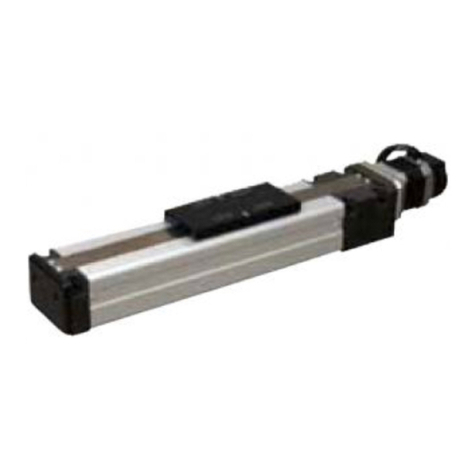
CKD
CKD KBZ Series instruction manual

Effigy Labs
Effigy Labs Control Pedal Quick Start Guide and Limited Warranty
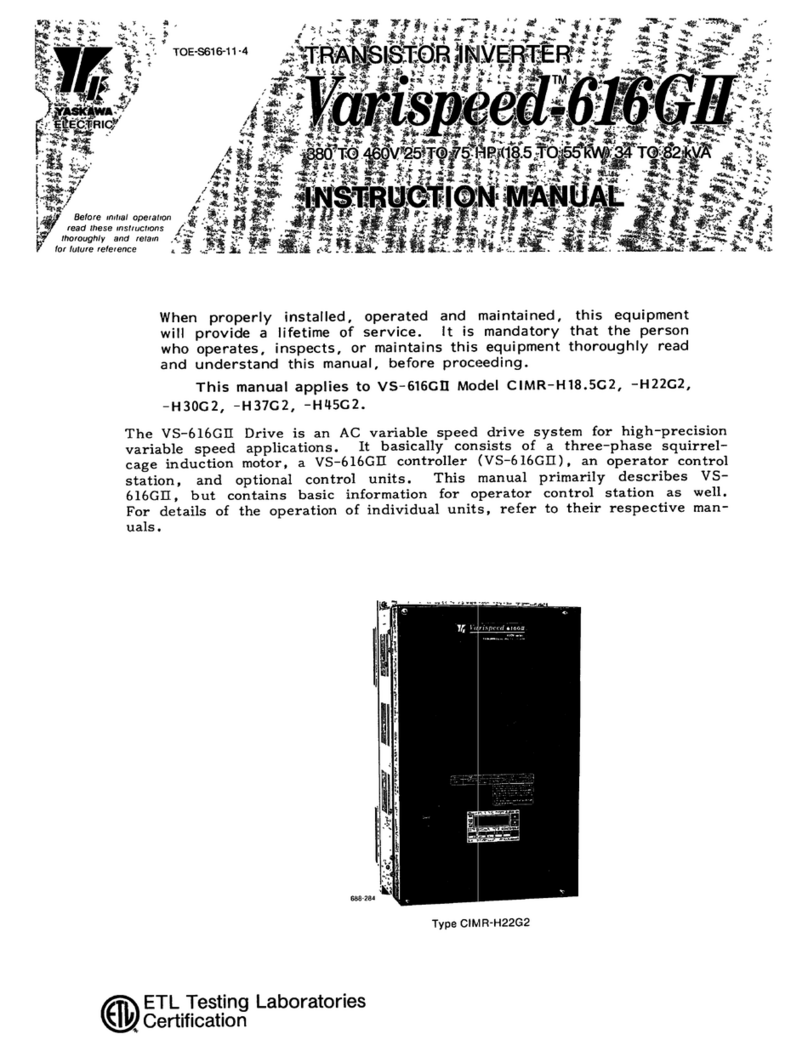
YASKAWA
YASKAWA Varispeed-616GII instruction manual

Hach
Hach SC1500 user manual
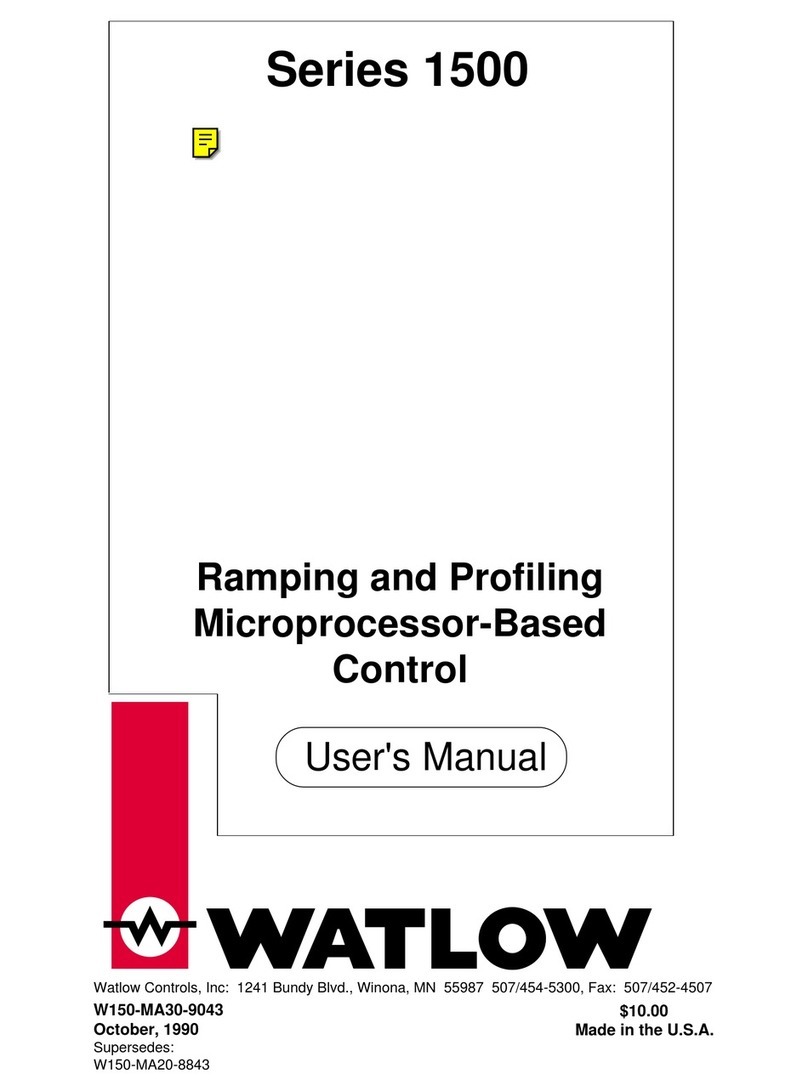
Watlow
Watlow Ramping and Profiling Microprocessor-Based Control SERIES... user manual
